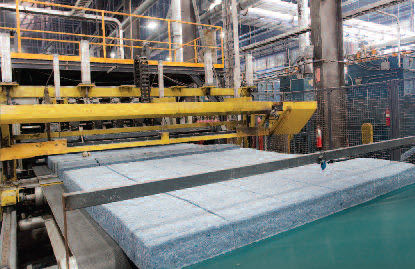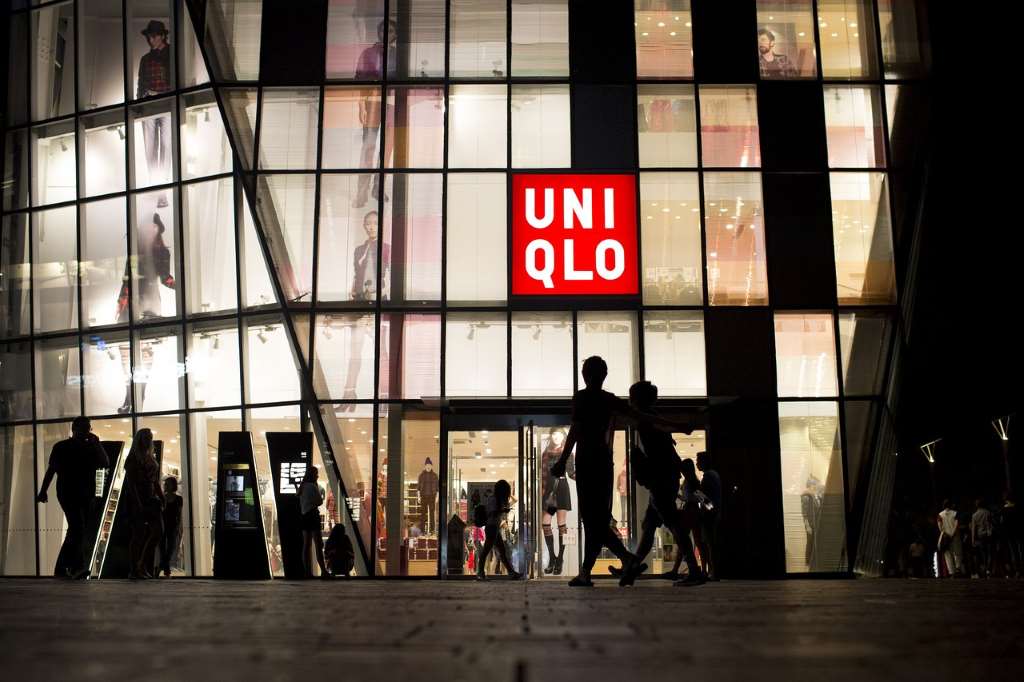"The Blue Jeans Go Green™ program, a denim recycling program in its 11th year, launched by Cotton Incorporated in 2006, gives new life to old denim — a fabric made of cotton — by recycling and converting it into UltraTouch™ Denim Insulation. While the product sells in the US at stores like Home Depot and Lowe’s, a portion is distributed each year to organizations like Habitat for Humanity to help communities in need. So far, more than 250,000 sq. ft. of the natural fiber insulation has been distributed to such programmes. "

The Blue Jeans Go Green™ program, a denim recycling program in its 11th year, launched by Cotton Incorporated in 2006, gives new life to old denim — a fabric made of cotton — by recycling and converting it into UltraTouch™ Denim Insulation. While the product sells in the US at stores like Home Depot and Lowe’s, a portion is distributed each year to organizations like Habitat for Humanity to help communities in need. So far, more than 250,000 sq. ft. of the natural fiber insulation has been distributed to such programmes. As Jonathan Greller, President, Saks OFF 5TH says, this partnership was a natural fit for them allowing them to give back to the community and, at the same time, deliver a service to customers that reward them as well.

Cotton Incorporated teamed with Bonded Logic, a Chandler, AZ based insulation company to manufacture the product, which contains 80 per cent post-consumer recycled content. Bonded Logic has more than 35 years experience designing and creating natural fibre insulation products. To date, the company has produced 2.7 million sq. ft. of insulation from recycled denim — enough to line 46 football fields.
Ultratouch technology
Bonded Logic maintains its product is good both for the environment and homeowners. Traditional insulation manufacturers consume considerably more energy while creating additional unwanted pollution and landfill waste, the company states. UltraTouch™ contains zero VOCs (volatile organic compounds), has no off-gassing concerns and lacks the formaldehyde of traditional insulation products. With UltraTouch™ the structure is well insulated, maximising HVAC efficiency, creating a healthy space to live and work.
Natural cotton allows the insulation to provide maximum thermal performance as well as sound absorption. The insulation is also fire- and mold-resistant, made from denim that has already served its purpose and would normally be thrown out. Through the program, Cotton Incorporated has helped collect more than 1.5 million pieces of denim — enough to make a denim path the length of California. Collecting this denim has diverted from landfills approximately 750 tonne of textile waste, akin to the weight of almost 400 cars.
Partners in progress
In its effort to reduce, reuse, and recycle denim, Cotton Incorporated has worked with a number players to make it easy for consumers who want to donate their worn denim pieces. Partners included colleges — including the University of Kentucky, James Madison, and Quinnipiac –NASCAR and multiple retailers. Madewell began partnering with the program in 2014 and has since collected over 155,000 pieces of denim. The retailer is participating again this year, allowing shoppers to recycle their ‘pre-loved’ jeans, and handing them $20 discounts for a new pair. Shoppers can bring their old jeans into any of Madewell’s stores year round, and the retailer sends them all to the Blue Jeans Go Green™ program. By the end of 2017, Madewell is dedicated to collecting 200,000 pairs of denim to be recycled through the program.
The average American owns seven pairs of jeans and seven pieces of denim, according to the Cotton Incorporated Lifestyle Monitor™ Survey. That could translate into a lot of disposed denim. And 1,600 pieces of recycled denim diverts roughly one tonne of waste from a landfill. The Council for Textile Recycling says charities sell just 10-20 per cent of the clothes donated to their locations. They are left with billions of pounds of unsold clothes that they can sell for salvage to professional recycling firms. These firms separate the wearable pieces that can be exported to other countries as secondhand apparel. Another portion is converted into reclaimed wiping rags. And the rest is recycled for home insulation, carpet padding and raw material for the automotive industry. Still, the council says the rate of textile recycling is just 15 per cent.
In 2009, the Blue Jeans Go Green™ program earned the record for the ‘Most Items of Clothing Collected for Recycling’, with 33,088 pieces of denim. The next year, a grant program was established to give architects, builders and project developers the opportunity to apply for contributions of insulation for civic-minded buildings. Four years later, the program celebrated recycling the one-millionth piece of denim.












